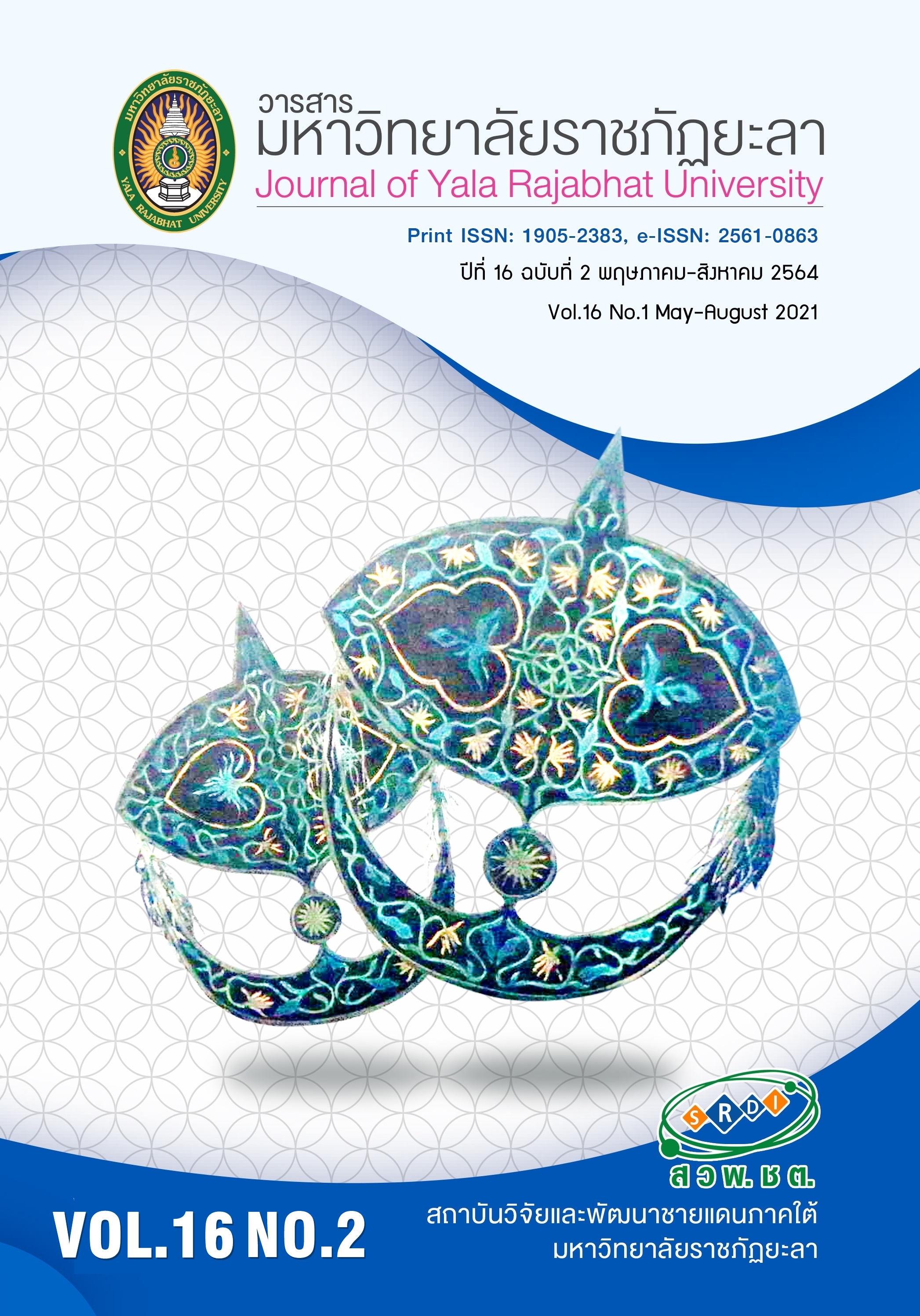โครงสร้างประชากรและสถานการณ์สุขภาพของชาวมลาบรี (ตองเหลือง) บ้านห้วยหยวก จังหวัดน่าน : การวิเคราะห์เชิงพื้นที่
Main Article Content
บทคัดย่อ
มลาบรี เป็นกลุ่มชาติพันธุ์กลุ่มหนึ่งที่อยู่ทางภาคเหนือของประเทศไทย การวิจัยนี้มีวัตถุประสงค์เพื่อวิเคราะห์โครงสร้างประชากร รวมถึงสถานการณ์สุขภาพของชาวมลาบรี ที่ตั้งถิ่นฐานอยู่ในชุมชนบ้านห้วยหยวก จังหวัดน่าน ผลการวิจัยพบว่า ในช่วงระหว่างปี พ.ศ. 2550 – 2559 อัตราการเกิดเฉลี่ยอยู่ที่ 29 คนต่อประชากรพันคน อัตราการตายเฉลี่ยอยู่ที่ 4 คนต่อประชากรพันคน อัตราการเพิ่มประชากรเฉลี่ยอยู่ที่ 25 คนต่อประชากรพันคน และมีอัตราส่วนทางเพศในปี พ.ศ. 2559 เท่ากับ 83 โดยพบว่าประชากรส่วนใหญ่อยู่ในวัยเด็ก มีอายุมัธยฐานที่ 16.5 ปี ซึ่งถือเป็นลักษณะโครงสร้างประชากรแบบ “เด็ก” โดยอัตราการเกิดที่สูง (สูงกว่าอัตราการเกิดของจังหวัดน่านเกือบ 5 เท่า) เป็นผลมาจากหลายปัจจัย ได้แก่ ปัจจัยทางด้านวัฒนธรรมและสุขภาพ (ความรู้และการรับรู้ข้อมูลข่าวสาร ทัศนคติ ความเชื่อและพฤติกรรมสุขภาพ) นอกจากนี้ยังพบปัญหาเรื่องความปลอดภัยในการคลอดที่ผู้หญิงมักคลอดลูกในป่าขณะติดตามสามีเข้าไปทำไร่ หรือนิยมคลอดลูกที่บ้าน อันส่งผลต่อสุขภาพของแม่และเด็ก และกระบวนการแจ้งเกิด สำหรับสาเหตุการตายที่พบมากที่สุด ได้แก่ การตายจากโรคไม่ติดต่อ คิดเป็นร้อยละ 42.86 ของการตายทั้งหมด ตามด้วยการตายจากอุบัติเหตุและจากโรคติดต่อ ตามลำดับ สำหรับปัญหาสุขภาพและการเจ็บป่วย พบว่า ชาวมลาบรีมักมีการดื่มแอลกอฮอล์ซึ่งส่งผลต่อปัญหาสุขภาพ รวมไปถึงปัญหาเรื่องการบาดเจ็บและการเสียชีวิตที่เกิดจากอุบัติเหตุ นอกจากนี้ภาวะความแปรปรวนทางจิตและพฤติกรรมนำไปสู่การฆ่าตัวตายมีแนวโน้มเพิ่มขึ้น เนื่องจากการเปลี่ยนแปลงทางด้านวัฒนธรรม สังคมและเศรษฐกิจ
Article Details
บทความ ข้อมูล เนื้อหา รูปภาพ ฯลฯ ที่ได้รับการเผยแพร่ในวารสารมหาวิทยาลัยราชภัฏยะลานี้ ถือเป็นลิขสิทธิ์ของวารสารมหาวิทยาลัยราชภัฏยะลา หากบุคคลหรือหน่วยงานใดต้องการนำทั้งหมดหรือส่วนหนึ่งส่วนใดไปเผยแพร่ต่อหรือกระทำการใดๆ จะต้องได้รับอนุญาตเป็นลายลักษณ์อักษรจากวารสารมหาวิทยาลัยราชภัฏยะลาก่อนเท่านั้น
เอกสารอ้างอิง
Department of Health Ministry of Public Health Thailand. (2013). Guidelines for health impacts assessing at a local level (1st Ed.). Nonthaburi: Health Impact Assessment Division, Department of Health Ministry of Public Health Thailand. (in Thai)
Highland health development center. (2020). Population structure and health conditions for the Hmong people [Online]. Retrieved June 1, 2020, from: https://hhdc.anamai.moph.go.th/main.php?filename=h_survey. (in Thai)
Huai Yuak community public health center. (2017). [Population data of Mlabri]. Unpublished raw data. (in Thai)
Jeongwarothai, M. & Moryadee, P. (2014). Social change and lifestyle of Mlabri in Tambol Mae Khaning, Amphur Wiangsa, Nan Province (1st Ed.). Nonthaburi: Institute for research and development, Sukhothai Thammathirat Open University. (in Thai)
Long, E., Long, M., & Waters, T. (2017). The demographics of a village of recently settled hunter gatherers in Thailand. Journal of the Siam Society, 105, 273 – 285.
Na Nan, S. (2012). Mlabri on the development route (1st Ed.). Chiang Mai: Center for Ethnic Studies and Devolopment, Faculty of Social Sciences, Chiang Mai University. (in Thai)
National Statistical Office. (2010). The 2010 population and housing census (Northern Region) (1st Ed.). Bangkok: National Statistical Office. (in Thai)
National Statistical Office. (2020). Number of live births and deaths and rates per 1,000 population by sex, region and province (Ministry of Public Health): 2013 – 2016 [Online]. Retrieved June 1, 2020, from: http://statbbi.nso.go.th/staticreport/page/sector/th/01.aspx. (in Thai)
Nimonjiya, S. 2015. From interacting to accessing: On relationship between the Mlabri and the forest. Journal of Social Research, 38(1), 137 – 170.
Pardthaisong-Chaipanich, L. (2012). Medical Geography (1st Ed.). Chiang Mai: Department of Geography, Faculty of Social Sciences, Chiang Mai University. (in Thai)
The Indigenous Peoples’ Foundation for Education and Environment (I.P.F). (2018). Mlabri indigenous groups (1st Ed.). Development of community knowledge-based database system for empowering the most marginalized and vulnerable indigenous groups in Thailand Project. Chiang Mai: The Indigenous Peoples’ Foundation for Education and Environment (I.P.F). (in Thai)
Worldometers. (2020). Population of Thailand [Online]. Retrieved June 1, 2020, from: https://www.worldometers.info/world-population/thailand-population/


